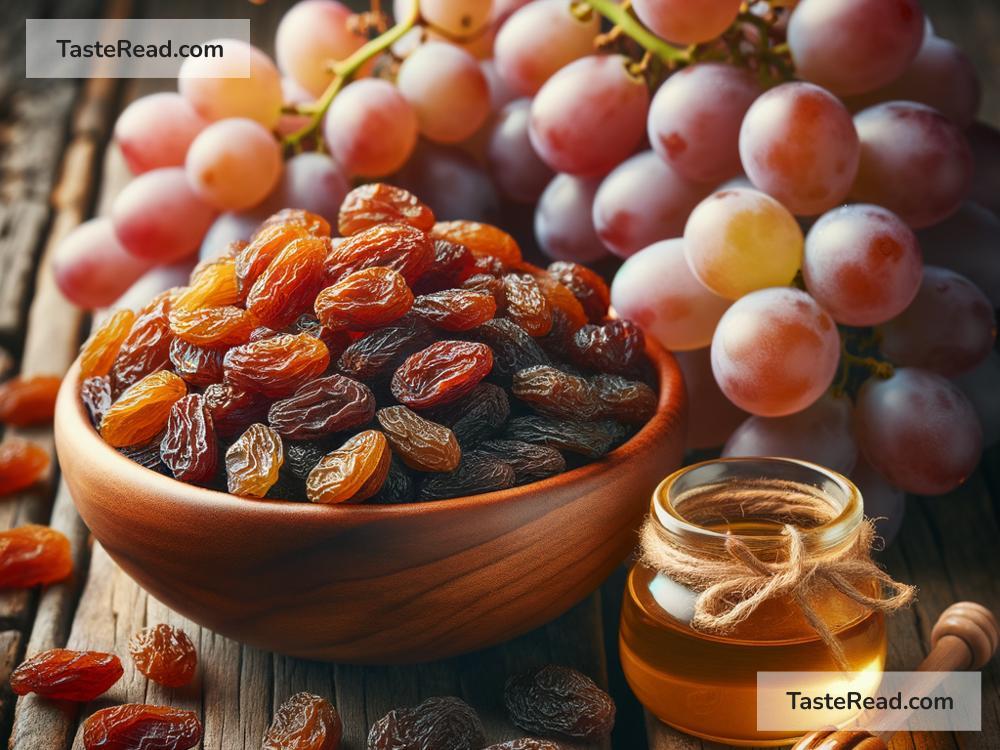Why Dried Grapes Are Called Raisins: A Simple Explanation
Have you ever wondered why dried grapes are called raisins? Raisins are one of those common foods we eat without thinking much about. They’re enjoyed in oatmeal cookies, trail mix, salads, or just on their own as a sweet snack. But why don’t we call them “dried grapes”? Why the name “raisins”? The answer is tied to history, language, and the way food terms evolve over time. Let’s dive in and explore how raisins got their name.
What Are Raisins?
First, let’s define raisins. Simply put, raisins are dried grapes. Grapes are harvested and then dehydrated, either in the sun or with controlled drying processes. The result is the wrinkly, brownish, sweet bites that we call raisins. Because drying concentrates the natural sugars in grapes, raisins are sweeter than fresh grapes, making them a popular ingredient in desserts and snacks.
While raisins are made from different types of grapes—such as Thompson Seedless, Sultana, or Muscat—they share one common trait: they’re grapes that have been dried to remove most of their moisture.
The Origin of the Word “Raisin”
The word “raisin” comes from history and language, specifically from Old French. Many food-related words we use today have roots in other languages, and raisin is no exception.
The word “raisin” was borrowed from Old French, where it originally meant “grape.” In French, “raisin” (pronounced differently than in English) still refers to a grape, whether it’s fresh or dried. Over time, as the word was adopted into English, its meaning narrowed to refer specifically to dried grapes.
This linguistic shift often happens when a word is borrowed from another language. English speakers took the term “raisin” but began using it exclusively for dried grapes, while the original meaning persisted in French.
Why the Name Stuck
Today, you might wonder why we don’t refer to raisins as simply “dried grapes.” After all, we call dried apricots what they are—dried apricots. Similarly, dehydrated plums are called prunes, which serves as a distinct name for the dried version of the fruit. So, why did raisins keep their unique name?
The answer lies in trade and tradition. Raisins have been around for centuries, long before modern food labeling existed. Historically, dried grapes were a prized commodity. They were easy to transport, lasted longer than fresh fruit, and provided an excellent source of energy. Because raisins were an important trade item, the term “raisin” stuck as their official name.
It’s also worth noting that raisins have been part of human diets for thousands of years. Ancient Egyptians, Greeks, and Romans enjoyed raisins. Since the name “raisin” has been in use for so long, it’s deeply ingrained in food culture and language, making it unlikely to change.
Raisins Around the World
Interestingly, raisins don’t always go by the same name in other languages. In French, where the word originated, dried grapes are called “raisins secs,” which translates to “dry grapes.” In other languages, raisins may be named differently depending on how they’re prepared or the type of grape used.
For example:
- In Spanish, raisins are often called “uvas pasas,” which means “raisins” or “dried grapes.”
- In Turkish, they’re called “kuru üzüm,” which translates to “dry grape.”
- In Farsi (Persian), they’re known as “keshmesh.”
This variety of terms reflects cultural differences in naming, preparation, and culinary traditions surrounding dried grapes.
Other Dried Fruits and Names
It might be fun to compare raisins to other dried fruits and their names. As mentioned earlier, dried apricots are simply called “dried apricots,” and dried cherries are “dried cherries.” But when it comes to prunes, we’ve got a distinct name for dried plums that sets them apart from their fresh counterpart.
The same goes for figs and dates. These fruits are commonly consumed in their dried form, but their names don’t change—they’re still called figs and dates, even after drying. Raisins, with their unique name, stand out as an exception to this naming pattern.
Why raisins have a special name instead of being called “dried grapes” is partly a matter of historical usage. Since raisins were important in trade and food traditions, their name became specific and stuck over time.
Raisins: A Name That Works
In the end, the name “raisin” has become universal. It’s simple, recognizable, and easy to say. While it technically refers to dried grapes, the word “raisin” has taken on its own identity, representing a well-loved, convenient food.
So the next time you’re snacking on raisins, think about their journey—from fresh grapes in a vineyard to dried, sweet treats—and how the name has been carried across centuries and languages. Raisins are a small but fascinating example of how food history and language come together to create meaning.
And while we could call them “dried grapes,” doesn’t “raisins” sound way better? It’s a name that’s stood the test of time, tying together history, culture, and culinary tradition into one tasty bite!


